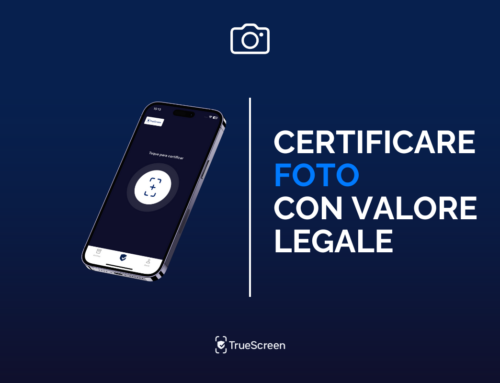Today, anyone can create any kind of digital content.
With increasingly sophisticated AI tools, we are exposed daily to videos, images, and audio so realistic that they are often indistinguishable from genuine material.
As a result, we are facing a deep crisis of trust, constantly asking ourselves whether what we see is real or a deepfake.
In this climate of digital uncertainty, the concept of Digital Provenance emerges, not merely as a technology, but as a concrete response to the growing need to verify authenticity, trace alterations, and establish trust within an increasingly complex and vulnerable digital ecosystem.
In this article, we will explore what digital provenance is, how it works, why it is essential today, and how TrueScreen makes it accessible and practical for any company or organization.
Digital Provenance: what is it?
The definition of digital provenance refers to an advanced and dynamic system that precisely traces the origin and history of any digital content, its “lifecycle.”
Listed by Gartner among the top 10 technological trends set to shape the future of IT through 2030, it goes beyond traditional metadata.
It is, in fact, a true “digital identity card” for content, one that follows it regardless of platforms, formats, or any modifications applied.
It has therefore become one of the most important tools today for ensuring trust in what we see.
How Digital Provenance Tracking works
A digital provenance tracking system addresses three key questions:
- Who is the author of the content?: provenance records the verified identity of the original creator, including devices, software, and creation timestamps.
- When and where was it created?: each item of content is associated with precise temporal and spatial data, making it possible to reconstruct its original context accurately.
- Is the content authentic or has it been tampered with?: through digital signatures and cryptographic hashes, the system verifies whether the content retains its original integrity or has been illicitly altered.
The underlying technologies
Thanks to digital signatures and invisible watermarks, digital provenance tracking provides concrete proof of the integrity and history of any digital asset, drastically reducing the risk of fraud, counterfeiting, and undetectable manipulation.
The result is a system that ensures the authenticity of every piece of content is certified and verifiable.
A practical example: claim management
Imagine an insurance company managing a damage claim.
To do so, it uses a digital content provenance platform that automatically records the original author, date and location of creation, and every instance of sharing.
In this way, if a dispute arises later about when or how the evidence was obtained, the company can demonstrate that the content’s origin and history are authentic and indisputable.
Traditional Provenance and Digital Provenance: the differences
From physical certificates to cryptographic records, the way we track origin has radically changed.
Understanding this shift is essential to assess the limits of traditional provenance and the potential of digital provenance.
Traditional Provenance: a paradigm of the past
Traditional provenance is based on the physical and historical documentation of tangible assets such as artworks or archaeological artifacts.
Consider a painting by Caravaggio: its provenance is reconstructed through paper certificates, testimonies, historical auction records, and documented transfers of ownership.
This approach entails serious limitations:
- Limited accessibility: only experts, archivists, and historians can access records scattered across various museums and libraries;
- Difficult updates: modifying or updating records is a slow, bureaucratic process that is not tracked in real time;
- Vulnerability to forgery: without cryptographic systems, it is far easier to falsify certificates or conceal alterations;
- Not independently verifiable: interested parties must rely on intermediaries such as experts, auction houses, or notaries.
Digital Provenance: a technological revolution
Digital provenance represents a major evolutionary leap forward.
Integrated into digital platforms, it is:
- Automated: tracking occurs in real time without manual intervention;
- Interoperable: operates across multiple platforms, systems, and digital formats, following international standards (C2PA, W3C PROV);
- Instantly updatable: every modification, access, or sharing event is recorded immediately;
- Cryptographically sealed: employs digital signatures to ensure that no one can alter the origin or history of data without detection;
- Independently verifiable: authenticity can be checked by stakeholders, clients, partners, and authorities without intermediaries;
- Adapted to complex systems: designed for fast-evolving digital environments that require high levels of speed, scalability, and security.
Why we can no longer do without Digital Provenance
If we think about today’s proliferation of deepfakes, fake news, and AI-generated content, it is clear that the line between real and fake has become increasingly blurred. New regulatory frameworks such as the Digital Authenticity and Provenance Act 2025 (in the United States), theCalifornian AI Accountability act and recent ISO standards now impose very strict obligations on organizations to:
- Ensure complete transparency in the management and distribution of digital content;
- Demonstrate accountability for who created, modified, and distributed each critical file;
- Certify authenticity through verifiable and independent systems;
- Maintain full audit trails for compliance and legal investigations.
For these reasons, implementing digital provenance tracking systems has become essential to:
- Protect corporate reputation by detecting fraud and reducing costs associated with incidents or counterfeiting;
- Ensure regulatory compliance with increasingly stringent legal requirements;
- Promote and spread a culture of digital trust where the origin and authenticity of information can be reliably verified.
Tangible benefits for companies and creators
What are the main advantages of Digital Provenance?
- Strengthened trust: when stakeholders, clients, and partners can independently verify content authenticity, business relationships and brand reputation improve;
- Regulatory compliance: meeting legal standards for audits, transparency, and accountability in data and digital asset management is now indispensable;
- Operational efficiency: automated verification processes deliver significant time and resource savings while simplifying both internal and external audits.
- Protection of intellectual property: creators can legally prove ownership, preventing fraud and disputes, thanks to a comprehensive traceability of the custody chain of digital works, media, documents, and NFTs;
Digital Provenance in practice
Thanks to evolving regulations and the growing adoption of cloud computing, AI, and decentralized systems, digital provenance is becoming increasingly accessible: even small creators and SMEs can now use advanced certification tools to protect their assets and collaborate within trustworthy digital ecosystems.
The advanced technologies at the core of digital content provenance include:
- Hashing and digital signatures: the integrity of any digital file (image, video, document) is ensured through its unique code, that is called “hash.”
If even a single bit of the file is modified, the hash changes completely; - C2PA (Coalition for Content Provenance and Authenticity): an open international standard that assigns each piece of content a cryptographically sealed “digital identity card,” dynamically updated throughout its lifecycle;
- ISO 27037: an international standard containing guidelines for the identification, collection, acquisition, storage and transport of digital evidence in order to ensure its integrity and legal admissibility.
- AI and analytics: intelligent systems monitor and analyze provenance data in real time, automatically detecting anomalies or tampering;
- Digital chain of custody: complete documentation of a content’s access, modification, and sharing history. In legal disputes, it proves that a file was properly handled, uncompromised, and admissible as reliable evidence in court.
Digital Provenance: for an integrated and democratized future
The versatility of digital provenance makes it applicable across a wide range of fields:
- Combatingdeepfakeson social media and communication platforms: platforms such as TikTok, YouTube, and Facebook can use C2PA to label AI-generated content and protect users from misinformation;
- Protection of digital art and NFTs: artists and collectors can certify the authenticity and ownership of a work, increasing its market value;
- Verification of the digital supply chain: companies can track where digital content and data were created and modified;
- Scientific domain: data certification is essential to ensure the reproducibility and validity of research, preventing scandals involving falsified data.
TrueScreen: the leading technology in Digital Provenance
In a continuously evolving digital marketplace, TrueScreen positions itself as a strategic partner for companies and professionals seeking to adopt digital provenance without technical complexity.
TrueScreen is the leading Data Authenticity Infrastructure for protecting, verifying, and certifying the origin and history of every digital asset, ensuring authenticity and integrity while preventing fraud, disputes, and misinformation, with recognized legal value.
With a centralized attestation database, TrueScreen enables organizations to store evidence of digital provenance with maximum security.
In fact, an attestation database is a secure, centralized repository where all evidence related to the origin and lifecycle of digital content (creation, modification, sharing, verification) is recorded as a cryptographically signed entry that cannot be altered without leaving a trace.
As the adoption of these databases continues to grow, Gartner reports that an increasing number of IT organizations will need to implement them in order to:
- comply with regulations and industry standards (e.g., the AI Act)
- prevent copyright infringement
- enable trusted collaboration with partners and customers.
Everything TrueScreen offers is designed to be simple, scalable, and compliant with the latest regulations: in a few seconds, your digital content becomes legal and indisputable evidence in court.
- Forensic certification of file (photos, videos, documents, audios, screenshots);
- In-depth detection of deepfake and AI generated content, metadata and GPS tampering, device-level manipulation and rebroadcasting attempts;
- More time and cost efficiency;
- Intuitive interface, seamless integration with standard workflows, and dedicated support.
Ready to make your data and digital content authentic, verifiable, traceable, and fraud-proof? Discover how TrueScreen brings digital provenance to your organization in a simple and immediate way.



